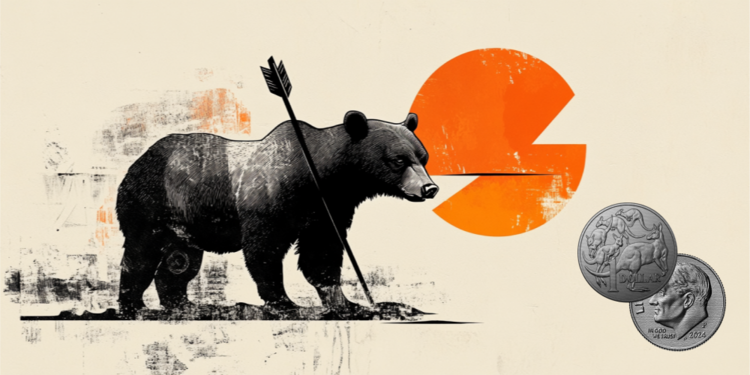- AUD/USD softens to around 0.6550 in Monday’s early Asian session.
- Bessent said tariffs will ‘boomerang’ back to April levels by August 1 for countries without an agreement.
- The RBA is expected to lower the central bank’s cash rate target by a quarter of a percentage point to 3.6% on Tuesday.
The AUD/USD pair trades in negative territory for the third consecutive day near 0.6550 during the early Asian session on Monday. The renewed concern about a global trade war weighs on the Australian Dollar (AUD) against the Greenback. The Reserve Bank of Australia (RBA) interest rate decision will be in the spotlight later on Tuesday.
US Treasury Secretary Scott Bessent said on Sunday that US President Donald Trump will send letters to some trading partners saying tariffs will boomerang back to April 2 levels on August 1 if there is no progress on the trade agreement. Bessent added that August 1 is not another new tariff deadline, but it could still give trading partners more time to renegotiate tariff rates. The renewed concern about trade tensions and tariff uncertainty might undermine the riskier assets like the Aussie.
The RBA is anticipated to cut its Official Cash Rate (OCR) for the third time this year at its July meeting on Tuesday. Traders in financial markets are now pricing in consecutive 25 basis points (bps) rate cuts in July and August, followed by a third by November. RBA rate cut bets could drag the Aussie lower against the USD in the near term.
Investors will closely monitor the developments surrounding tariff policies. Trump said on Saturday that he had signed letters to 12 countries outlining the various tariff levels they would face on goods they export to the US, with the “take it or leave it” offers to be sent out on Monday, per Reuters. Any positive progress could help limit China-proxy Aussie’s losses, as China is a major trading partner of Australia.
Australian Dollar FAQs
One of the most significant factors for the Australian Dollar (AUD) is the level of interest rates set by the Reserve Bank of Australia (RBA). Because Australia is a resource-rich country another key driver is the price of its biggest export, Iron Ore. The health of the Chinese economy, its largest trading partner, is a factor, as well as inflation in Australia, its growth rate and Trade Balance. Market sentiment – whether investors are taking on more risky assets (risk-on) or seeking safe-havens (risk-off) – is also a factor, with risk-on positive for AUD.
The Reserve Bank of Australia (RBA) influences the Australian Dollar (AUD) by setting the level of interest rates that Australian banks can lend to each other. This influences the level of interest rates in the economy as a whole. The main goal of the RBA is to maintain a stable inflation rate of 2-3% by adjusting interest rates up or down. Relatively high interest rates compared to other major central banks support the AUD, and the opposite for relatively low. The RBA can also use quantitative easing and tightening to influence credit conditions, with the former AUD-negative and the latter AUD-positive.
China is Australia’s largest trading partner so the health of the Chinese economy is a major influence on the value of the Australian Dollar (AUD). When the Chinese economy is doing well it purchases more raw materials, goods and services from Australia, lifting demand for the AUD, and pushing up its value. The opposite is the case when the Chinese economy is not growing as fast as expected. Positive or negative surprises in Chinese growth data, therefore, often have a direct impact on the Australian Dollar and its pairs.
Iron Ore is Australia’s largest export, accounting for $118 billion a year according to data from 2021, with China as its primary destination. The price of Iron Ore, therefore, can be a driver of the Australian Dollar. Generally, if the price of Iron Ore rises, AUD also goes up, as aggregate demand for the currency increases. The opposite is the case if the price of Iron Ore falls. Higher Iron Ore prices also tend to result in a greater likelihood of a positive Trade Balance for Australia, which is also positive of the AUD.
The Trade Balance, which is the difference between what a country earns from its exports versus what it pays for its imports, is another factor that can influence the value of the Australian Dollar. If Australia produces highly sought after exports, then its currency will gain in value purely from the surplus demand created from foreign buyers seeking to purchase its exports versus what it spends to purchase imports. Therefore, a positive net Trade Balance strengthens the AUD, with the opposite effect if the Trade Balance is negative.

